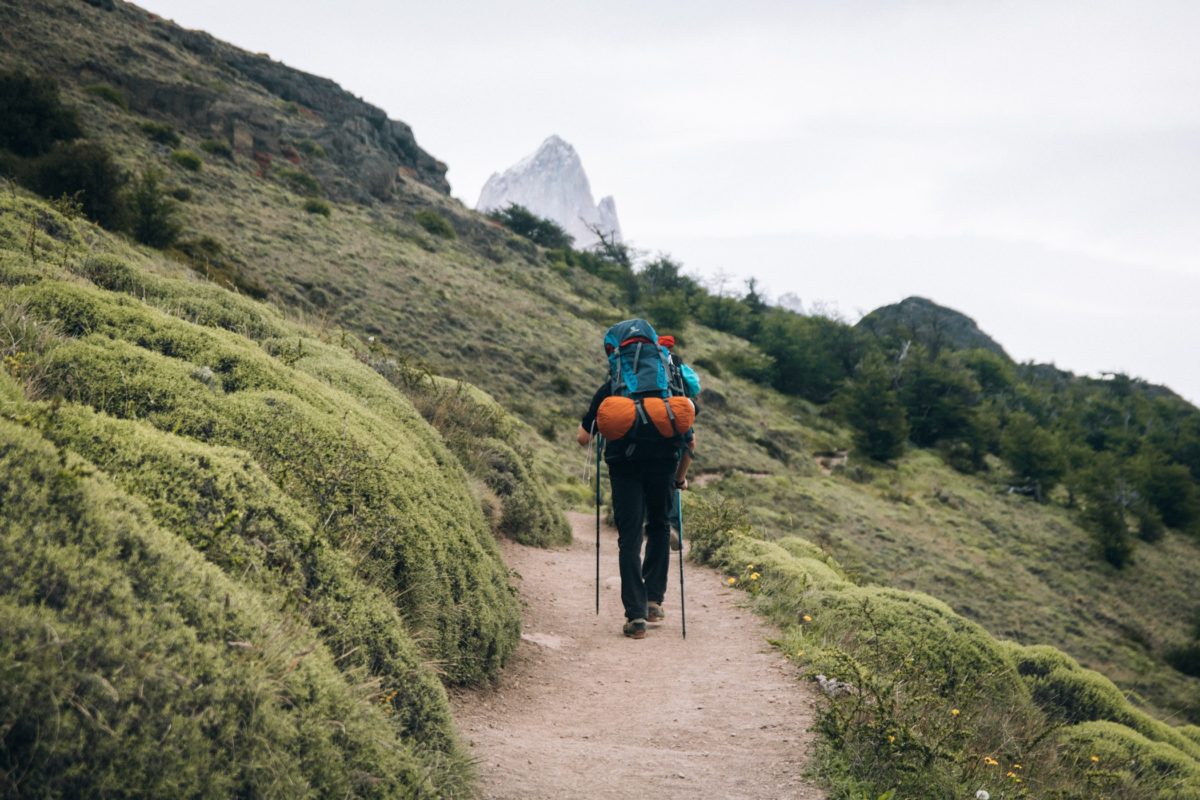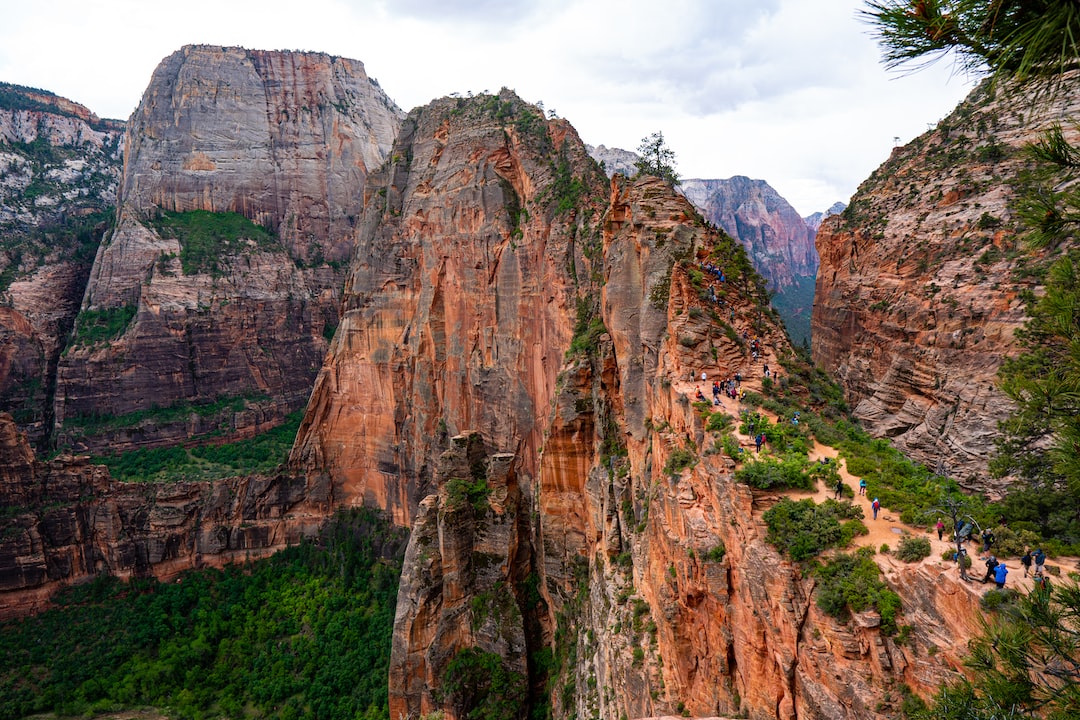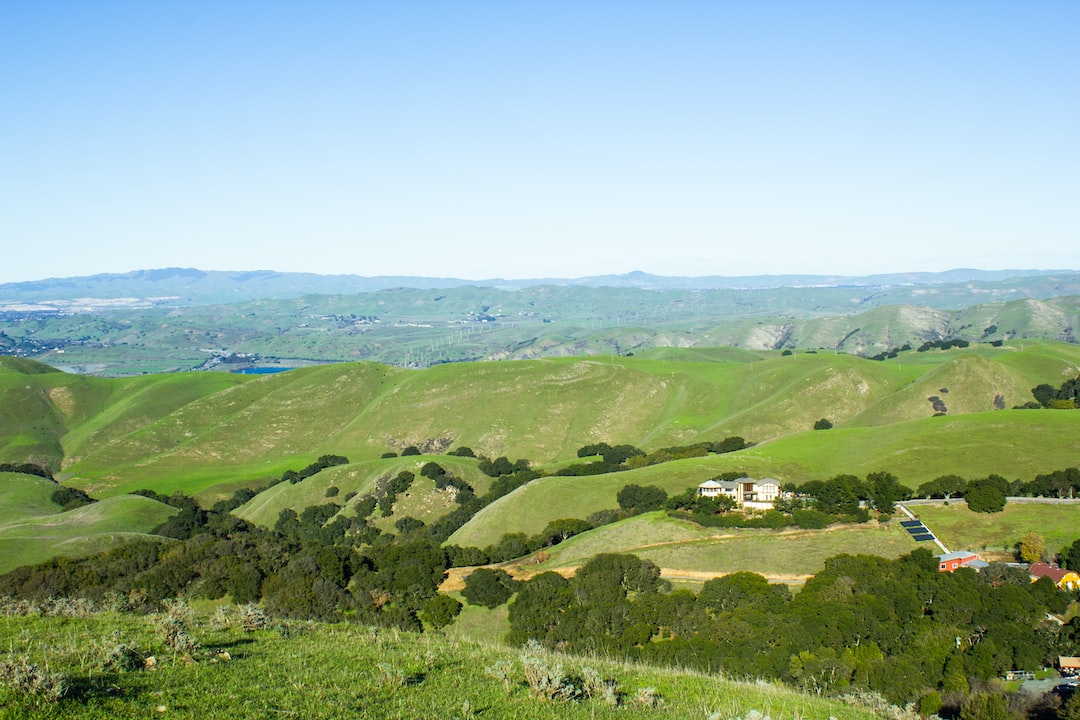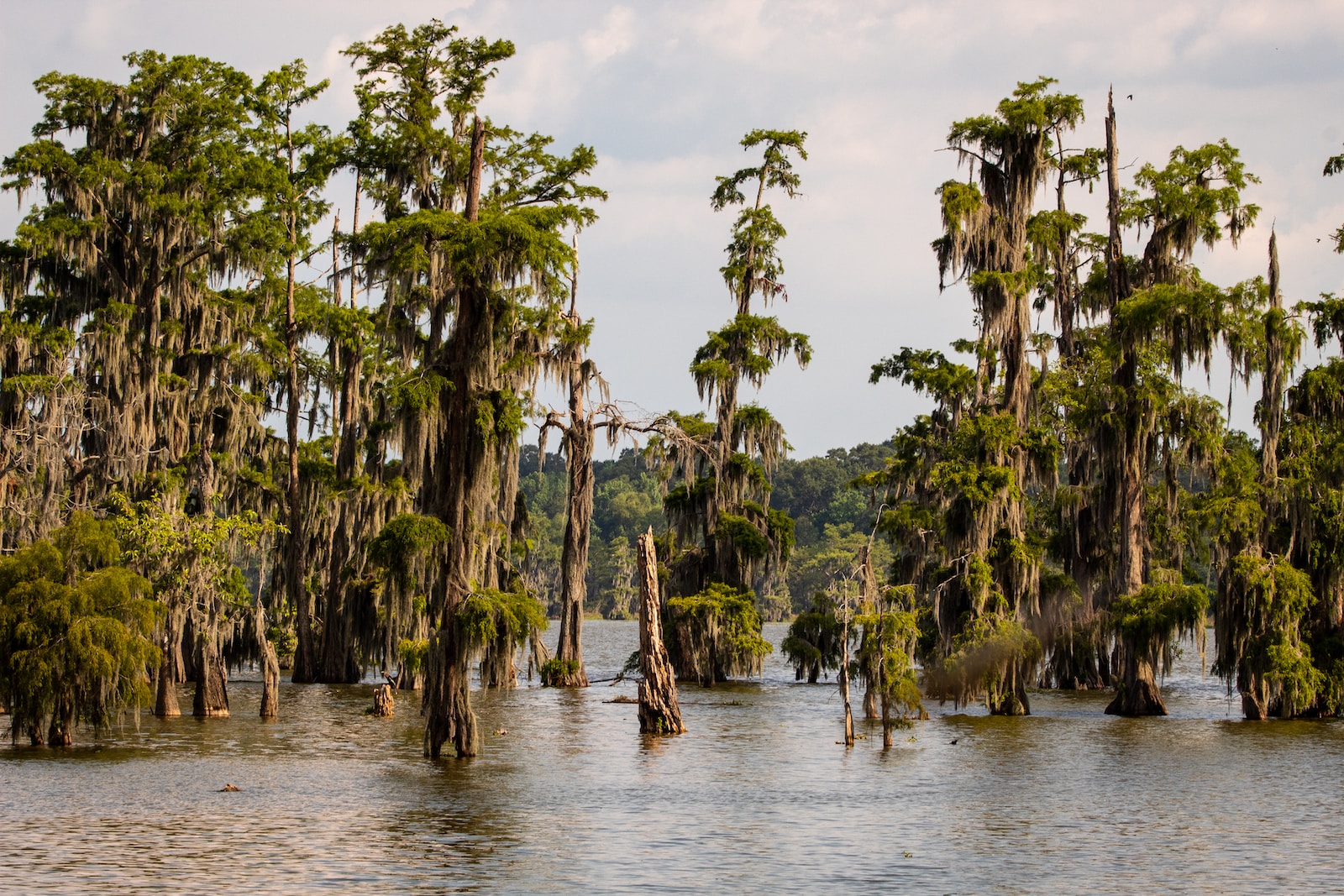Heading out on the trail this week or planning a trip and wondering what are the best pants to wear? In this guide, I’ll walk through the best clothing options for your legs and help you figure out the best pants to wear when trekking.
In warm and mild weather many hikers (including me) like to wear shorts – which are breathable, lightweight and very flexible (no loss of movement). In colder weather hiking pants provide a quick-drying and comfortable alternative to regular pants. Jeans are hot and heavy, and other pants that are restrictive should be avoided.
Benefits of Hiking Pants
Hiking pants (or trousers) are designed specifically for long outdoor walks in a range of weather and trail conditions. When it’s too cold for shorts or you need extra protection against shrubs or insects – hiking pants protect your legs.
- Protect you against the sun and the weather
- Keep your dry
- Protection against shrubs and insects
- Larger pockets for storage
- Hardwearing materials for durability
How to Choose Hiking Pants
When looking for a hiking pant here are the key things to look for and be aware of. The best pant for you depends on a number of things from the protection you’re looking for, the level of waterproofing and the terrain and weather conditions of your planned hikes.
1. Durability
Durability is important from the get-go. Durable materials will last longer and give you many seasons of use. Durability is not about the thickness of the materials used, but the quality with which they have been stitched and manufactured. These are hard metrics to get, but the best way to choose a hiking pant for durability is to read the reviews and/or go with a well-known and respected brand.
2. Protection
All pants protect against the sun, but other factors to consider are insets and shrubs. Thinner materials with looser weaves are more likely to snag on branches or shrubs and make it easier for mosquitos and other insects to sting you.
Another consideration is the weather – if you’re hiking in mild to warm weather then breathability is a key consideration. You can just as easily get wet from too much sweat as you can from the rain if your pants don’t have enough air flow. Vents may also be an important feature for you or even removable legs (more on convertible pants below).
If you’re hiking in rainy conditions or expect heavy downpours every now and again then water resistant fabrics or fully waterproof overpants should be looked at.
3. Comfort
Every pant, no matter the weather needs to be comfortable. There is nothing as important as your legs for hiking. Over long days of movement, propelling yourself forward and up trails – you’re legs deserve and want as much freedom as possible.
Comfort comes down to getting the right fit and also choosing a pair of pants that use the right materials. It’s for these reasons that jeans and other bulky pants should be avoided – they restrict movement and make each step more difficult.
Your hiking pants should not be too tight and stop you from fully flexing and extending your knee – likewise, if your pants are too baggy and constantly need pulling up over your hips – then it’s going to distract you from the enjoyment of hiking. Not only that but you won’t be able to cover as many miles as you can when you have free movement.
If extra storage is important to you, look for bigger pockets – otherwise, most people prefer to have all their weight in the pack.
What are the Best Hiking Pants?
There are a few different types of hiking pants from convertible pants where the legs can be removed and turned into short to fully waterproof pants that you put over the top of another pair.
1. Softshell
These pants are lightweight, flexible and designed to be both breathable and waterproof. These types of hiking pants are popular with many hikers because they feel good on and provide a great range of movement. You can hike long distances and not feel too restricted or weighed down.

2. Convertible Pants
Zip-off hiking pants are both shorts and pants which can be transformed by zipping the legs on or off. They allow you to comfortably hike in warm and colder weather with the same set of pants and change pretty easily on the trail.

3. Waterproof Overpants
While softshell hiking pants are more water resistant than cargo pants – if you’re looking for a fully waterproof pair of pants that don’t absorb any moisture you’ll want a pair of waterproof overpants like the Bergauhs. These are made from Polymide and will keep you dry even in torrential downpours.
One thing to bear in mind is that these types of pants are less breathable and if the weather is warm then you will likely get sweaty and damp on the inside. Look for a waterproof overpant that has vents and/or breathable materials like the Berghaus.

Tights & Leggins
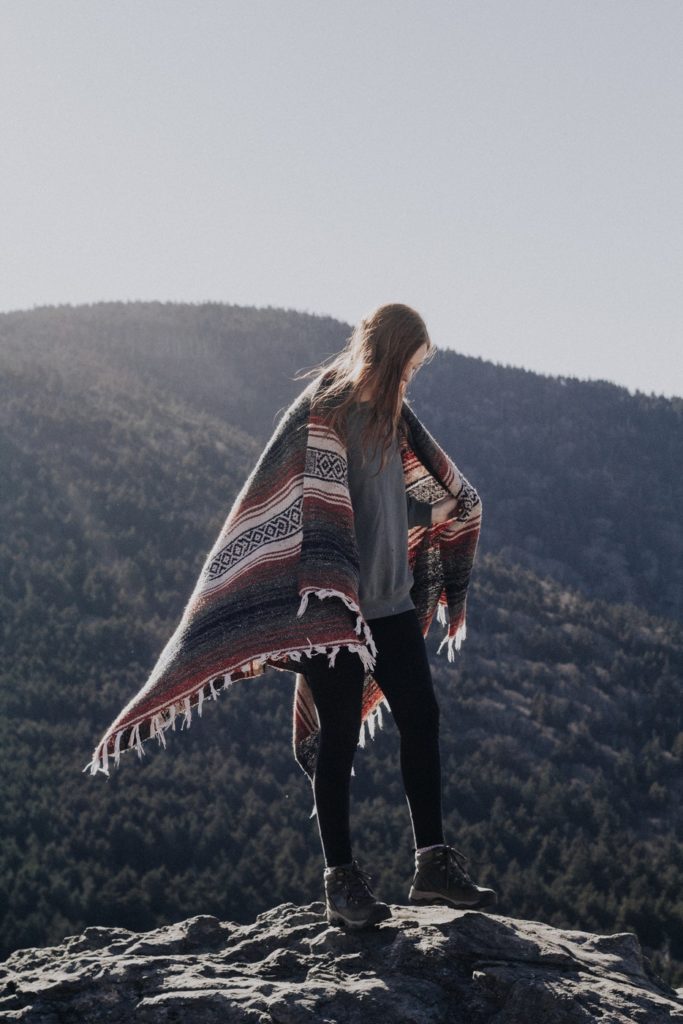 Many women nowadays wear tights and leggings when out hiking. These are great for most short day hikes in warmer weather – but can be a bit exposed in colder, longer or higher altitude trecks.
Many women nowadays wear tights and leggings when out hiking. These are great for most short day hikes in warmer weather – but can be a bit exposed in colder, longer or higher altitude trecks.
Legging are great as they are generally sweat-wicking and sit close to the skin providing a comfortable free-range of movement.
Just be aware that if the conditions change and the heavens open leggins won’t stay dry for long and staying warm will become important. If you’re heading out on a more substantial hike it’s worth having a spare pair of hiking pants in your pack.
Shorts
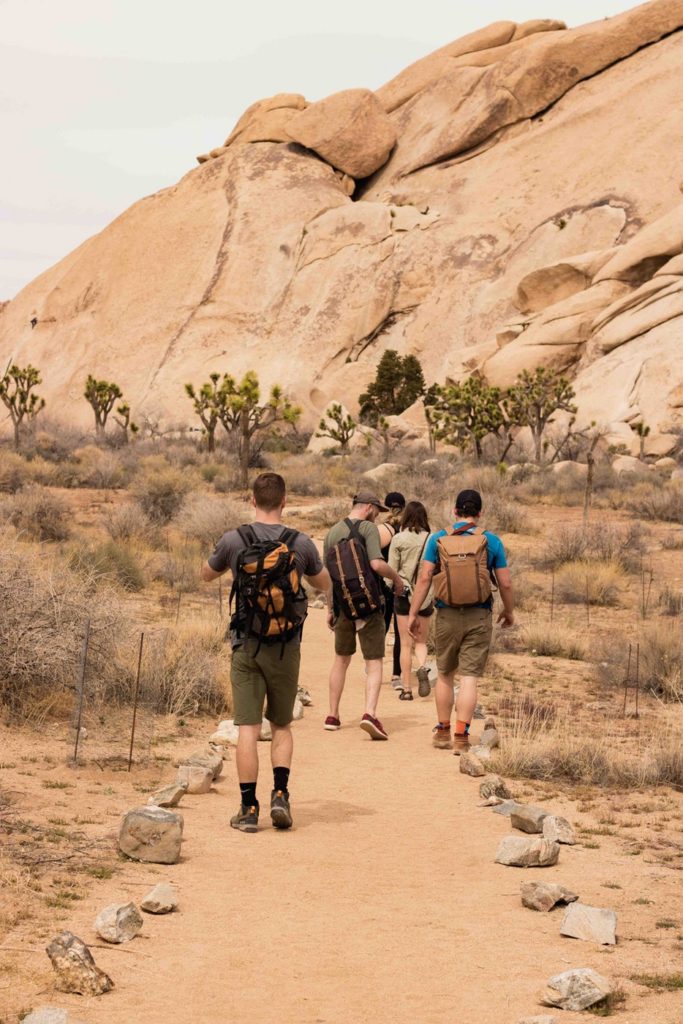 Shorts are my go-to when hiking most trails in most weather about 8°C (46°F). Hikers love shorts because they’re super simple, lightweight and provide maximum freedom of movement. Each time you step upwards and flex your knee you’re not inhibited by any fabric.
Shorts are my go-to when hiking most trails in most weather about 8°C (46°F). Hikers love shorts because they’re super simple, lightweight and provide maximum freedom of movement. Each time you step upwards and flex your knee you’re not inhibited by any fabric.
There is also an extra joy in having your skin exposed to the outdoors. Being able to have skin that can breathe comfortably and dry quickly is a great advantage. Even in low rainfall – shorts are great as they don’t get wet as easily (less material) and you’re legs will dry off quickly. Wearing pants only becomes more of an issue if the rain gets too heavy or the cold gets too much. Then you can throw on your waterproof overpants or put your hiking pants on.
Benefits of shorts:
- Lightweight and breathable
- Dry quickly and less material to get wet
- Maximum freedom for your legs
- Easy to pack and travel
There is a huge variety of shorts from larger cargo shorts to gym shorts. You don’t need anything special for hiking – just comfortable shorts that are lightweight and fit well.
Shorts with water-resistant materials are more fun to wear in the rain but generally if the material is lightweight and the temperature not too cold then you will dry off just fine.

Final thoughts
If you’re heading out on a nearby trail you don’t need expensive hiking pants to get started. Find a pair of old gym shorts or lightweight cargo pants and hit the trail.
When you become more experienced, hike further and higher and in more extreme conditions – then it might be worth looking at a more durable and waterproof pair of specialist hiking pants.
The key point to remember is that freedom to move your legs and protection from the elements are the two key things to remember. In warmer climates go for shorts and wear suncream or wear very breathable pants. In colder, wetter weather look for fully waterproof overpants or quick-drying softshell pants.
If you enjoyed this guide, please give it a share and thanks for your support.

